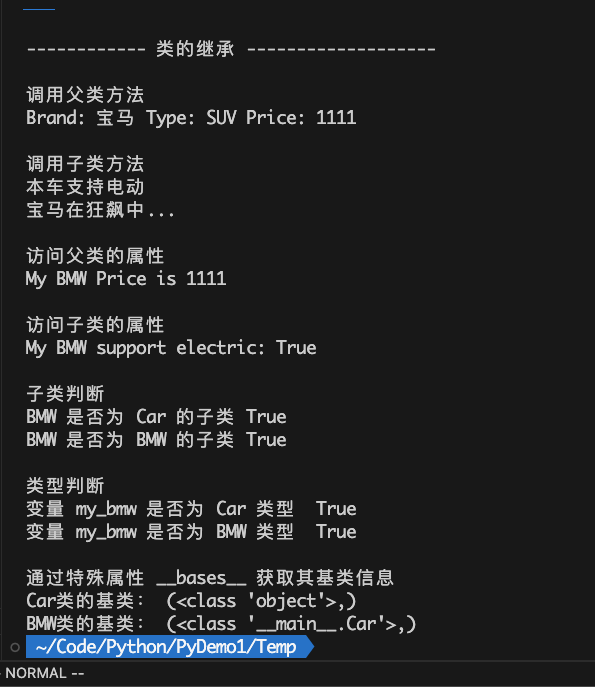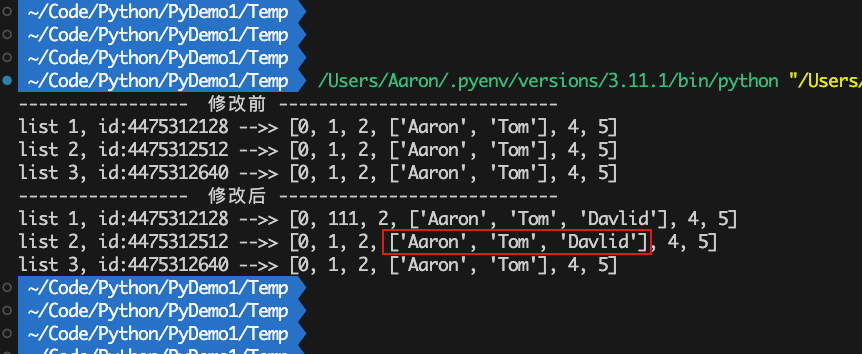1
2
3
4
5
6
7
8
9
10
11
12
13
14
15
16
17
18
19
20
21
22
23
24
25
26
27
28
29
30
31
32
33
34
35
36
37
38
39
40
41
42
43
44
45
46
47
48
49
50
51
52
53
54
55
56
57
58
59
60
61
62
63
64
65
66
67
68
69
| title = "类的继承"
print(f"------------ {title} -------------------")
class Car:
"""
汽车
"""
def __init__(self, brand, type, price):
self.brand = brand
self.type = type
self.price = price
def info(self):
print("Brand:", self.brand, "Type:", self.type, "Price:", self.price)
def drive(self):
print("The Car is running ...")
class BMW(Car):
"""
宝马汽车
"""
def __init__(self, type, price, support_electric):
super().__init__("宝马", type, price)
self.support_electric = support_electric
def can_use_electric(self):
if self.support_electric :
print("本车支持电动")
else:
print("本车不支持电动")
def drive(self):
print("宝马在狂飙中...")
my_bmw = BMW("SUV", 1111, True)
print("\n调用父类方法")
my_bmw.info()
print("\n调用子类方法")
my_bmw.can_use_electric()
my_bmw.drive()
print("\n访问父类的属性")
print("My BMW Price is", my_bmw.price)
print("\n访问子类的属性")
print("My BMW support electric:", my_bmw.support_electric)
print("\n子类判断")
print("BMW 是否为 Car 的子类", issubclass(BMW, Car) )
print("BMW 是否为 BMW 的子类", issubclass(BMW, BMW) )
print("\n类型判断")
print("变量 my_bmw 是否为 Car 类型 ", isinstance(my_bmw, Car) )
print("变量 my_bmw 是否为 BMW 类型 ", isinstance(my_bmw, BMW) )
print("\n通过特殊属性 __bases__ 获取其基类信息")
print("Car类的基类:", Car.__bases__)
print("BMW类的基类:", BMW.__bases__)
|




